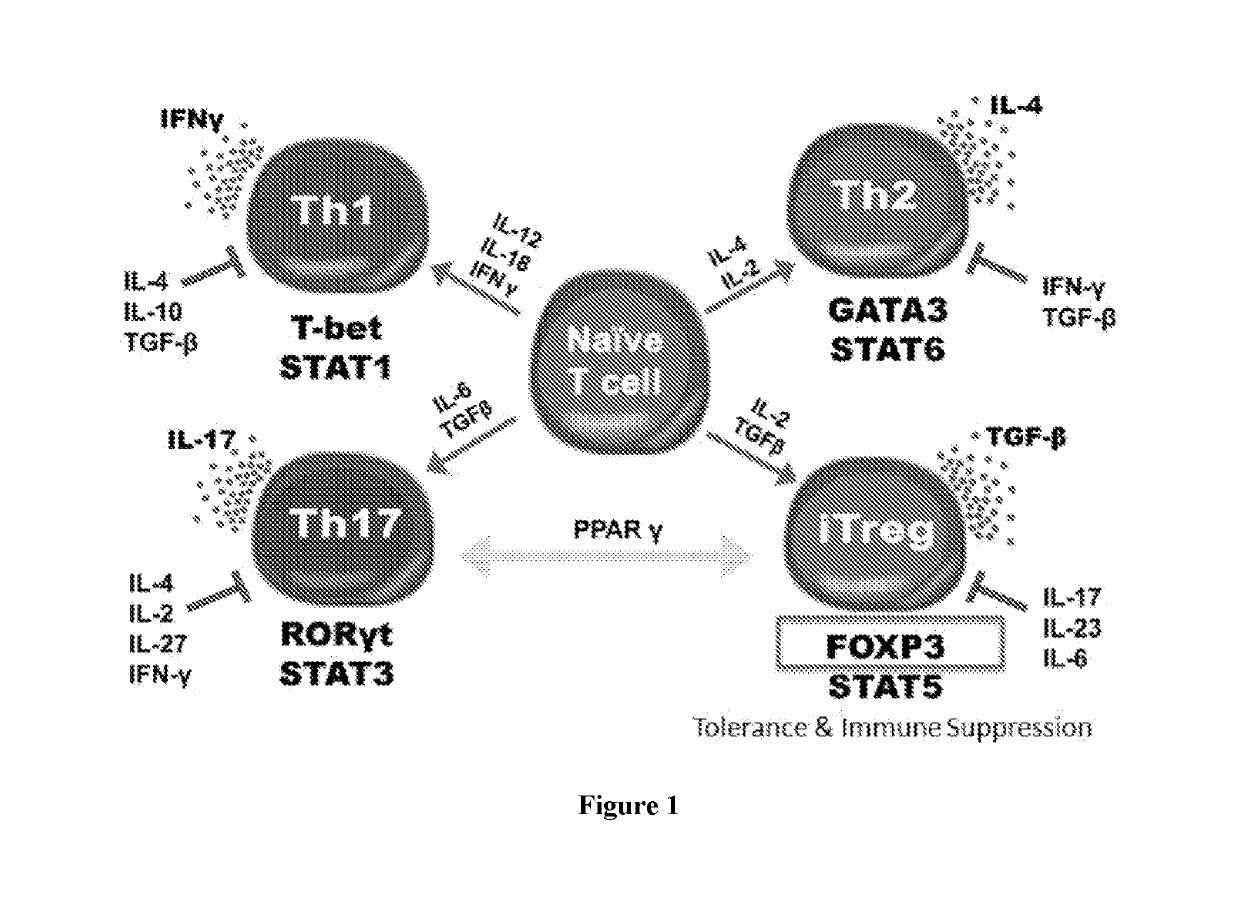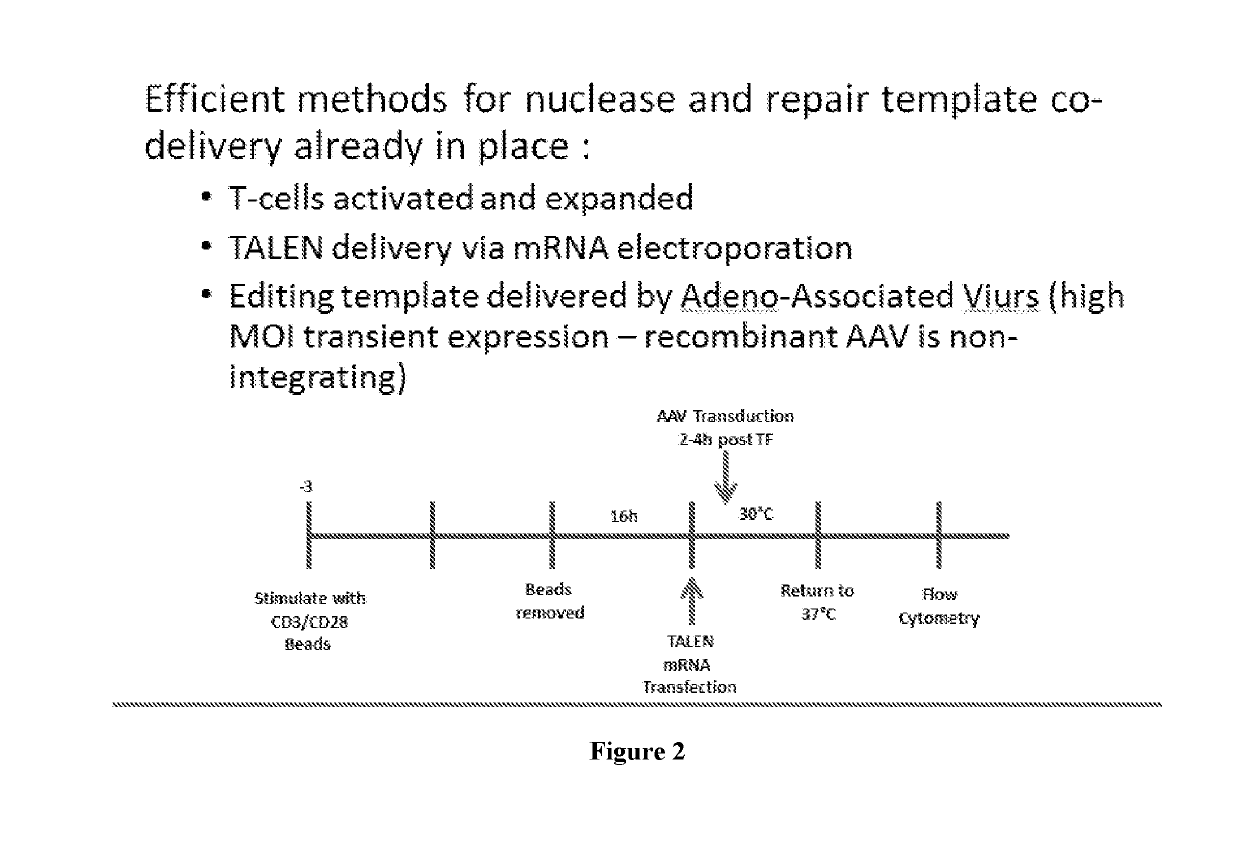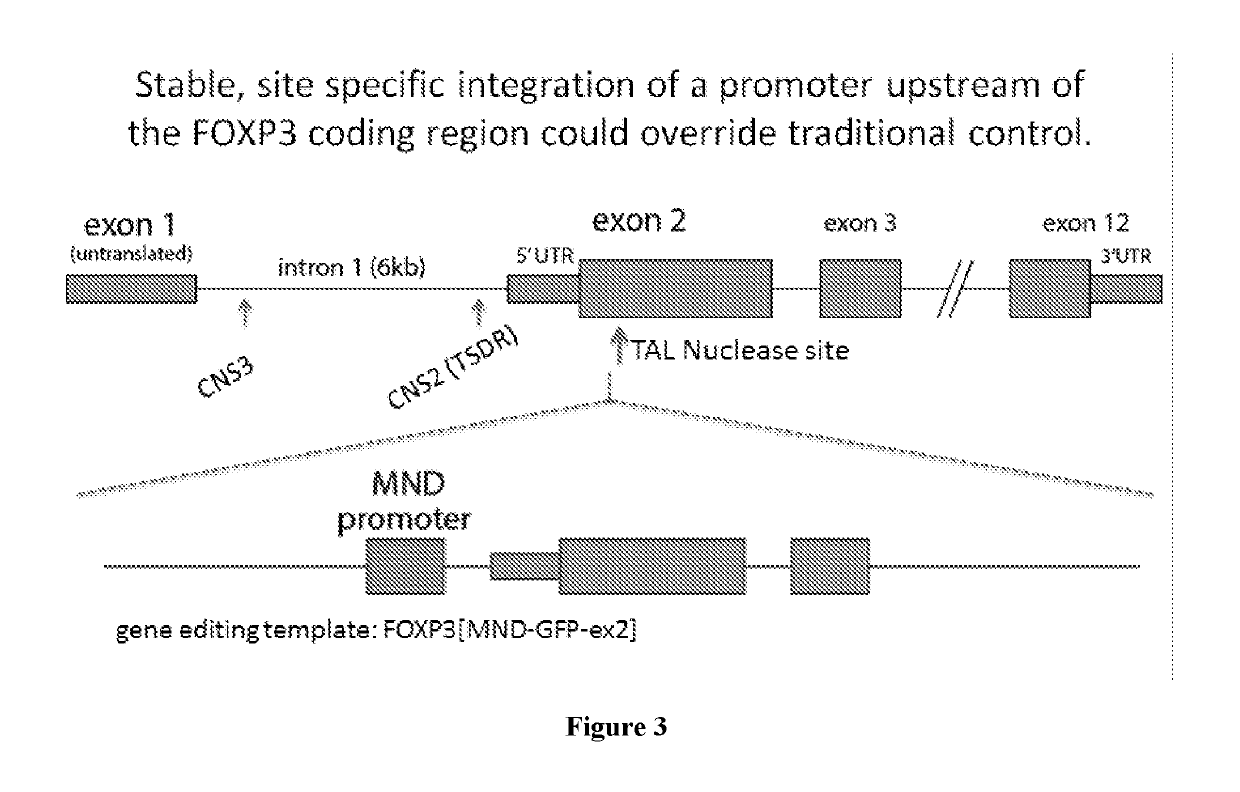Method for treating autoimmune disease using cd4 t-cells with engineered stabilization of expression of endogenous foxp3 gene
a technology of endogenous foxp3 and cd4 t cells, which is applied in the direction of immunological disorders, drug compositions, peptide/protein ingredients, etc., can solve the problems of inability to produce the tolerance necessary to avoid inflammation, the existing ttreg population is subject to epigenetic regulation, and the auto-immune symptoms worsen, so as to improve the therapeutic effect, improve the treatment effect, and stabilize the expression of the endogenous foxp3
- Summary
- Abstract
- Description
- Claims
- Application Information
AI Technical Summary
Benefits of technology
Problems solved by technology
Method used
Image
Examples
Embodiment Construction
[0050]Described herein, are several methods of treatment or amelioration of auto-immune diseases using CD4 T-cells that have been engineered to have stable expression of their endogenous FOXP3 gene. These methods can also be used to ameliorate the effects of graft versus host disease (GVHD).
DEFINITIONS
[0051]As used herein, “nucleic acid” or “nucleic acid molecule” refers to polynucleotides or oligonucleotides such as deoxyribonucleic acid (DNA) or ribonucleic acid (RNA), oligonucleotides, fragments generated by the polymerase chain reaction (PCR), and fragments generated by any of ligation, scission, endonuclease action, exonuclease action, and by synthetic generation. Nucleic acid molecules can be composed of monomers that are naturally-occurring nucleotides (such as DNA and RNA), or analogs of naturally-occurring nucleotides (e.g., enantiomeric forms of naturally-occurring nucleotides), or a combination of both. Modified nucleotides can have alterations in sugar moieties and / or in...
PUM
 Login to View More
Login to View More Abstract
Description
Claims
Application Information
 Login to View More
Login to View More - R&D
- Intellectual Property
- Life Sciences
- Materials
- Tech Scout
- Unparalleled Data Quality
- Higher Quality Content
- 60% Fewer Hallucinations
Browse by: Latest US Patents, China's latest patents, Technical Efficacy Thesaurus, Application Domain, Technology Topic, Popular Technical Reports.
© 2025 PatSnap. All rights reserved.Legal|Privacy policy|Modern Slavery Act Transparency Statement|Sitemap|About US| Contact US: help@patsnap.com



